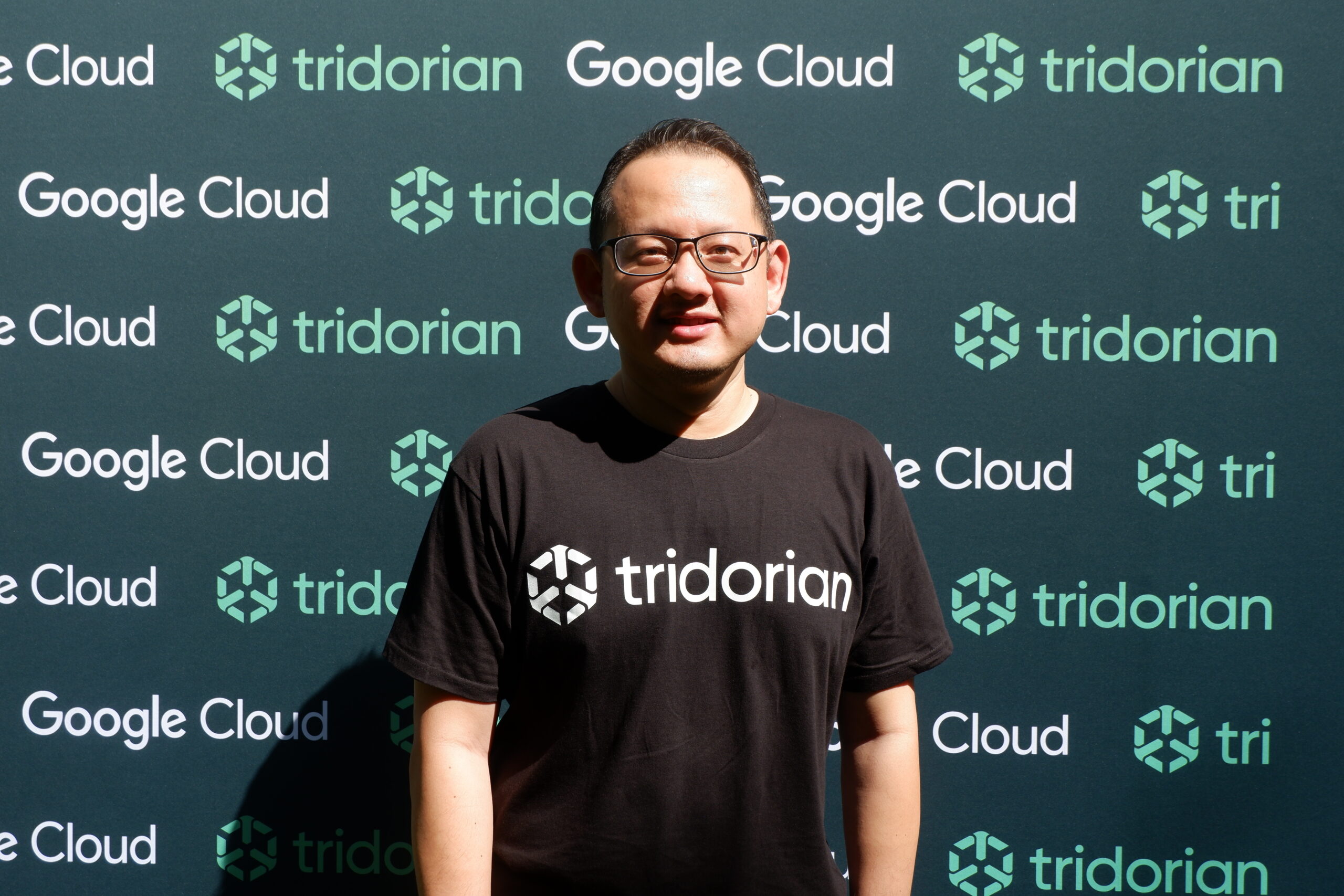TL;DR:
Running Oracle on Google Cloud just got way easier. Thanks to a new partnership, you can now:
- Use Oracle on Google Cloud Compute Engine or GKE for flexibility and control.
- Connect Oracle and Google Cloud seamlessly with Cross-Cloud Interconnect.
- Run Oracle Database natively with Oracle Database@Google Cloud.
A Match Made in the Cloud
Why should you care about this partnership? For starters, Oracle is a leader in enterprise databases, with a whopping 87% of Fortune 100 companies relying on its Exadata systems for business-critical operations. Meanwhile, Google Cloud is renowned for its cutting-edge infrastructure, AI capabilities, and scalability. Together, they’ve created a multi-cloud experience that simplifies running Oracle workloads in ways we didn’t have access to before.

As Oracle Chairman Larry Ellison puts it, “Customers want the flexibility to use multiple clouds.” And Google CEO Sundar Pichai agrees, noting that this collaboration allows customers to combine Oracle’s enterprise prowess with Google Cloud’s innovation. In short, this partnership makes running your Oracle workloads in the cloud a whole lot easier.
Three New Ways to Run Oracle Workloads on Google Cloud
Let’s talk options. Google Cloud now offers three distinct ways to host your Oracle workloads, giving enterprises the tools they need to modernize, scale, and innovate.
1. Oracle on Google Cloud Compute Engine or GKE
Companies can now deploy their Oracle workloads with the flexibility to customize their deployment to suit their business needs with Oracle on Google Cloud Compute Engine or Google Kubernetes Engine (GKE).
How it works?
Google Cloud’s Compute Engine provides virtual machines (VMs) optimized for running Oracle databases and applications, while GKE allows you to containerize and orchestrate Oracle workloads. This setup gives you complete control over your Oracle deployments, whether you’re migrating legacy systems or building new applications.
Key features include:
- Customizable VM Configurations: Tailor your Compute Engine VMs to meet your Oracle database requirements, from memory and CPU specifications to disk performance. This flexibility ensures your workloads run efficiently, no matter how demanding they are.
- High Availability with GKE: Use Google Kubernetes Engine to deploy Oracle workloads in containerized environments, providing built-in redundancy, scalability, and automation for seamless operations.
- Integrated Storage Solutions: For better performance and reliability, pair your Oracle deployments with Google Cloud’s high-performance, durable storage options.
- Hybrid and Multi-cloud Options: Compute Engine and GKE make it easier to integrate Oracle workloads into your existing infrastructure, whether it’s on-premises, hybrid, or multi-cloud.
2. OCI and Google Cloud Cross-Cloud Interconnect
The Oracle Cloud Infrastructure (OCI) and Google Cloud Cross-Cloud Interconnect provide a seamless bridge between Google Cloud and OCI, enabling a smooth, efficient multi-cloud experience for enterprise workloads. It’s designed to minimize latency, keep your traffic secure, and eliminate cross-cloud data transfer charges, making it easier than ever to integrate both platforms.

How it works?
Cross-Cloud Interconnect leverages private, high-speed connections between Google Cloud and OCI. These connections bypass the public internet, ensuring low latency, high throughput, and secure data transfers between the two clouds. Whether you’re running Oracle applications in OCI or building data pipelines with Google Cloud’s AI and analytics tools, the Interconnect ensures your workloads perform seamlessly across both environments.
Key features include:
- Zero-Cost Data Transfers: Forget about hefty egress charges—data moves freely between the two clouds without extra costs.
Low Latency: Applications running in different clouds can communicate with minimal delay, ensuring hybrid setups are highly efficient. - Secure Traffic: Your data remains private as it travels across dedicated interconnect lines, eliminating public internet exposure.
- On-Demand Virtual Connections: Connectivity can be provisioned in minutes, giving you the agility to adapt as your workload demands change.
Regional Availability:
Currently, OCI and Google Cloud Cross-Cloud Interconnect are available in 11 regions:
🇺🇸 Ashburn (us-east4)
🇨🇦 Montreal (northamerica-northeast1)
🇩🇪 Frankfurt (europe-west3)
🇪🇸 Madrid (europe-southwest1)
🇬🇧 London (europe-west2)
🇦🇺 Sydney (australia-southeast1)
🇦🇺 Melbourne (australia-southeast2)
🇮🇳 Mumbai (asia-south1)
🇯🇵 Tokyo (asia-northeast1)
🇸🇬 Singapore (asia-southeast1)
🇧🇷 Sao Paulo (southamerica-east1)
More regions will be added in the coming months, further expanding this service’s reach. For now, if your business operates in these regions, you can enjoy a high-performance, private connection between Google Cloud and OCI, creating seamless interoperability for your multi-cloud operations.
This service is ideal for organizations that want to combine Oracle’s enterprise-grade database capabilities with Google Cloud’s cutting-edge AI and analytics tools. By bridging the gap between the two clouds, OCI and Google Cloud Cross-Cloud Interconnect unlock the full potential of a multi-cloud strategy, ensuring businesses can innovate without limitations.
3. Oracle Database@Google Cloud
Want the power of Oracle’s enterprise-grade database running natively on Google Cloud? That’s what Oracle Database@Google Cloud delivers—a fully managed, integrated solution that brings Oracle’s database services into Google’s secure, scalable cloud ecosystem.
How it works?
Oracle Database@Google Cloud allows you to migrate or deploy Oracle databases directly within Google Cloud data centers. You can run your Oracle workloads on Google’s high-performance infrastructure, whether you’re handling mission-critical enterprise applications or testing new ideas. And the best part is that it’s all fully managed, so you can focus on innovation rather than operational headaches.


Adhi (Sugi) Sugiharto
Cloud Architect
Key benefits include:
- High Performance and Scalability: Google Cloud’s infrastructure ensures your Oracle workloads run faster and scale effortlessly as your needs grow.
- Global Availability: Initially available in four Google Cloud regions—US East (Virginia), US West (Salt Lake City), UK South (London), and Germany Central (Frankfurt)—the service is expanding to 12 additional regions, including Madrid, Sydney, Melbourne, Mumbai, Tokyo, Singapore, and Sao Paulo.
- Comprehensive Oracle Offerings: These include Oracle Autonomous Database, Oracle Exadata Database Service, and Oracle HeatWave MySQL, providing customers with a wide range of database options tailored to their workloads.
- Seamless integration: Integrate seamlessly with Google Cloud’s advanced AI services, such as Vertex AI and Gemini foundation models, and Oracle Database 23ai’s converged database capabilities.
This solution is perfect if your business is looking to modernize its Oracle deployments, simplify operations, and take advantage of Google Cloud’s tech. So, whether you’re running Exadata on-premises or considering a move to the cloud, Oracle Database@Google Cloud is designed to meet you where you are and help you get where you want to go.
The Old Way: Bare Metal Solutions
Before the latest advancements, running Oracle workloads on Google Cloud typically involved Bare Metal Solution, a robust approach designed for enterprises that needed high performance and minimal latency for their mission-critical applications. While it’s still an excellent option for specific use cases, it represented an earlier stage of enabling Oracle workloads on Google Cloud.
How it works?
Bare Metal Solution provides dedicated, physical servers housed in Google Cloud’s data centers. These servers aren’t virtualized, which means they offer the same raw performance you’d get from on-premises hardware but with the added advantage of Google Cloud’s global infrastructure. It’s like having your own private data center but without the overhead of managing physical hardware.
Key features include:
- Dedicated Hardware: You get complete control over a bare metal server optimized for Oracle workloads such as databases and enterprise applications.
- High-Speed Networking: Bare Metal Solution connects directly to Google Cloud’s network, providing low-latency access to storage, analytics, and AI services.
- Flexibility for Legacy Applications: Many businesses rely on legacy Oracle systems that are difficult to virtualize. The Bare Metal solution allows you to run these workloads without modification.
- Integrated with Google Cloud Services: While the servers are bare metal, they’re tightly integrated with Google Cloud, enabling hybrid solutions that combine the best of on-prem and cloud capabilities.
Bare Metal Solution is ideal if your business requires specific hardware configurations for Oracle workloads, has compliance or regulatory needs requiring dedicated hardware, or wants to migrate Oracle workloads to the cloud without re-architecting applications.

While Bare Metal Solution paved the way for Oracle workloads on Google Cloud, it’s not always the most agile option for businesses seeking scalability or seamless multi-cloud integration. For many, it was the critical first step to cloud modernization, offering the performance of on-premises infrastructure with the added benefits of cloud-based connectivity and innovation.
Where Do We Go From Here?
Running Oracle workloads on Google Cloud has never been this simple—or this exciting. Whether you’re planning a data center exit, modernizing legacy applications, or exploring the latest in AI-driven analytics, this partnership covers all the bases.
So, what’s the next step? Take a closer look at how these new methods can transform your business. And don’t be shy—reach out to us if you have questions or need a hand getting started. After all, the future of your Oracle workloads just got a lot brighter. Let’s make the most of it.
Schedule a consultation
Embrace the power of secure cloud and AI solutions with Tridorian. Reach out to learn how we can make a difference.